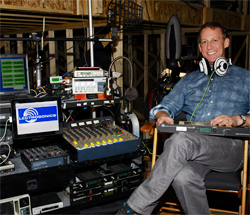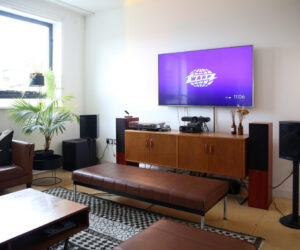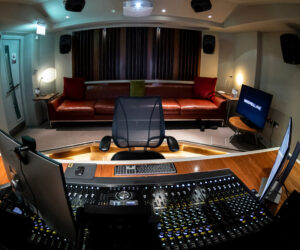Los Angeles, CA-based production sound mixer David Kelson is constantly challenged with the uncontrollable variables that come with his job, including surround noise, digital RF interference and little time for experimentation, which he overcomes with assistance from a range of Lectrosonics wireless products.
Having worked in location sound for the TV and film industry since 1982, some of Kelson’s recent projects include The Walking Dead on the AMC network (American Movie Classics) and the TV movie Steel Magnolias, and he is currently working on a feature film entitled Last Vegas with Robert DeNiro, Michael Douglas, Morgan Freeman, and Kevin Kline.
Specifically, he utilizes an assortmant Lectrosonics SM Series super-miniature transmitters, HM plug-on transmitters, Venue receiver systems (fully stocked with VRT receiver modules), UCR411 receivers, and for his IFB/Comm system, a T4 IFB transmitter and R1a IFB beltpack receivers. All of these units employ the company’s Digital Hybrid Wireless technology.
“I’ve been using Lectrosonics wireless microphone systems since 1992,” Kelson says. “I’ve always been very impressed with the sound quality, rock solid build quality, RF agility, and compact form factor of the gear.
“I also augment all of my Lectrosonics equipment with the company’s ALP500 shark fin and SNA600 dipole antenna systems, which go a step further toward ensuring the range and dropout-free performance so essential in my line of work.”
Currently, on the Last Vegas project, Kelson has been using a combination of SM, SMV, SMQV, and HM transmitters with his two Lectrosonics Venue receiver systems, which are set up in true diversity mode, where two receivers are set to work with a single transmitter.
He gave the example of a Steadicam shot that presented some real challenges on the motion picture.
“There’s an evening scene in Last Vegas where Douglas and Mary Steenburgen are walking on Las Vegas Boulevard in front of the Bellagio Hotel, and there was a phenomenal amount of RF interference from all the nearby shows in the area,” Kelson explains. “I used Lectrosonics’ one-touch SmartTune auto frequency selection feature on the Venue receivers to identify available frequencies in blocks 21 and 22.
“Once we identified those frequencies and locked them in, we achieved superb range with terrific audio quality. We set the transmitter power at 250 mW per unit, and using the Lectrosonics amplified antennas, we achieved very strong signal modulation, a surprising amount of range, and no dropouts whatsoever. The gear really delivered.”
To communicate with his two assistants, Kelson described his private communication system setup.
“My boom operator and utility tech each wear an SM transmitter that is outfitted with the company’s belt mounted mute switches,” he details. “These transmitters feed a pair of UCR 400A receivers that are summed by a small mixer and sent to the comm-in feed of my main mixer.
“I use my Lectrosonics T4 IFB transmitter to communicate with their R1a IFB beltpack receivers. This is a closed loop system where all three of us can communicate with one another privately, on the fly, and it’s been very effective.”




















